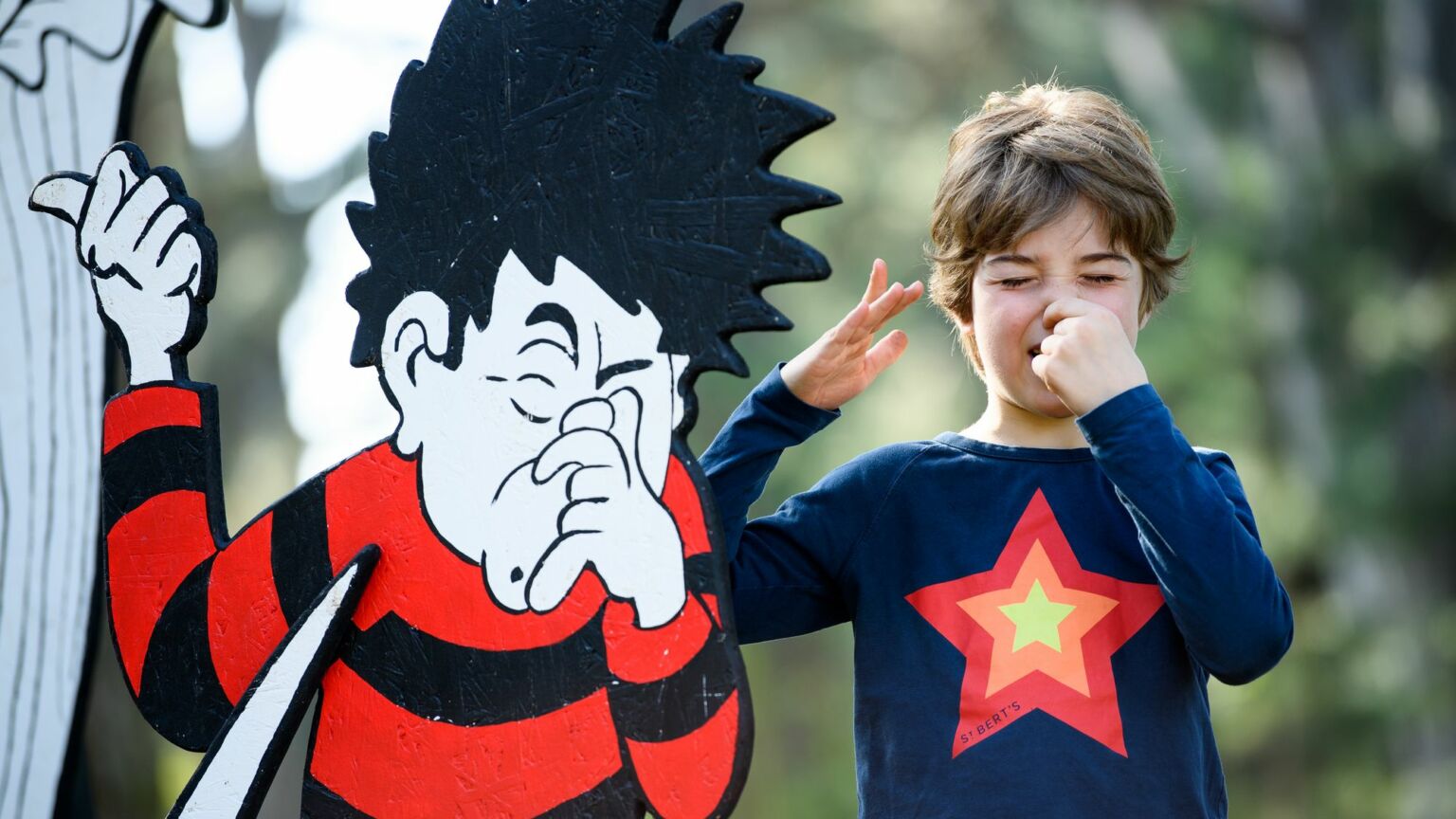The taming of the Bash Street Kids
Now the Beano's rebellious tearaways have been given the sensitivity-reader treatment.

Want to read spiked ad-free? Become a spiked supporter.
First, the ‘sensitivity readers’ came for Roald Dahl. Last year, publishers Penguin enlisted consultancy firm Inclusive Minds to make Dahl’s gleefully rude stories for children ‘more relevant’ for today’s politically correct age. That meant taking out all the slights against ‘fat’ Augustus Gloop and the ‘tiny’ Oompa-Loompas.
Now it’s the turn of kids comic strip ‘The Bash Street Kids’, a staple of the Beano, to be given an inclusive make-over. Five new characters were unveiled this week, each developed with the help of Inclusive Minds. Apparently, the Beano’s creative director, Mike Stirling, felt that Bash Street had become ‘completely anachronistic’.
Thanks to the contribution of an ‘inclusion ambassador’, Bash Street will now be a lot more racially mixed. New characters include Mahira Salim, an aspiring football star of Pakistani descent, and Jemima Jones, a black ghosthunter. Then there’s Mandi Sharma, whose problems with anxiety will be used to highlight mental-health issues. There will also be a wheelchair-bound character called Rubi von Screwtop, who has ambitions to be a scientist.
The new characters aren’t the only recent changes to the Bash Street strip. In 2021, the overweight ‘Fatty’ lost his nickname and is now only known as ‘Frederick’, while acne-ridden ‘Spotty’, is now ‘Scotty’.
It was my great fortune to interview Bash Street Kids creator Leo Baxendale while he was still alive. I imagine he would have been happy to see more black kids in Bash Street. When he dreamed the strip up in the early 1950s, there were very few ethnic-minority children in British schools. The Bash Street Kids were just meant to be ordinary kids in a local community school – worlds away from the characters featured in the cloistered, public-school environments of Charles Hamilton’s ‘Greyfriars School’ stories. Today, ethnic diversity is simply a fact of life in ordinary British schools.
What Baxendale would have been less happy about is the moralising and uplifting lessons now being loaded on to the characters, old and new. His kids were meant to be anarchic pullers-down of authority, rather than worthy role models like Bash Street’s new arrivals.
Baxendale himself was a rebellious, anarchistic type. He was frequently involved in his own clashes with authority, mainly in the shape of Beano publishers DC Thomson. He even sued DC Thomson for the rights to his work.
The Beano did not have a ‘creative director’ when Baxendale was working on its comic strips in the 1950s. Rather, it had an editor, George Moonie. DC Thomson wanted to build on the success of the Dennis the Menace strip, which had made its first appearance in 1951. Drawn by David Law, Dennis was a lot naughtier than the cute blond in the American comic strip of the same name. The young Leo Baxendale offered Moonie up a whole school full of Dennises.
Moonie was impressed by Baxendale’s drawings and stories, but was concerned that the kids were too naughty. His rule, he explained, was that the characters could get up to anything, as long as they were duly punished at the end. Hence Dennis was often beaten with a slipper by his exasperated dad in the last panel of the page.
Baxendale duly handed him a prototype page in which the kids rioted in the school. In the last panel, an ominous array of riot police in tanks, deliberately drawn too stark for a kids’ comic, closed in on the naughty children. Moonie took the hint that the moralising call for punishment was too proscriptive, and gave it up.
It was the right decision. Moral lessons were alien to Baxendale’s creative vision. They were the kind of thing he saw his Bash Street Kids as fighting against. His characters embodied the value of raucous rebellion against the strictures put on them by adult society. He would have baulked at the idea of an outside consultancy firm telling him how to develop characters even more than he did Moonie’s much less sinister demand for the slipper.
Baxendale’s characters were always rebels. A later strip he developed for a comic called Smash! in the late 1960s was called ‘The Swots and the Blots’. In this strip, the rebellious Blots relentlessly teased and persecuted the high-minded Swots. You cannot help but think that the characters created with the help of Inclusive Minds would be among the Swots.
The Bash Street Kids of old would not have stood for this right-on update. They would likely have stuck a pin on the creative director’s chair, tied any diversity consultants to a tree and planted stink bombs in the offices of Inclusive Minds.
We can’t keep letting sensitivity readers suck all the raucous energy out of culture.
James Heartfield’s latest book is Britain’s Empires: A History, 1600-2020, published by Anthem Press.
Picture by: Getty.
Who funds spiked? You do
We are funded by you. And in this era of cancel culture and advertiser boycotts, we rely on your donations more than ever. Seventy per cent of our revenue comes from our readers’ donations – the vast majority giving just £5 per month. If you make a regular donation – of £5 a month or £50 a year – you can become a and enjoy:
–Ad-free reading
–Exclusive events
–Access to our comments section
It’s the best way to keep spiked going – and growing. Thank you!










Comments
Want to join the conversation?
Only spiked supporters and patrons, who donate regularly to us, can comment on our articles.